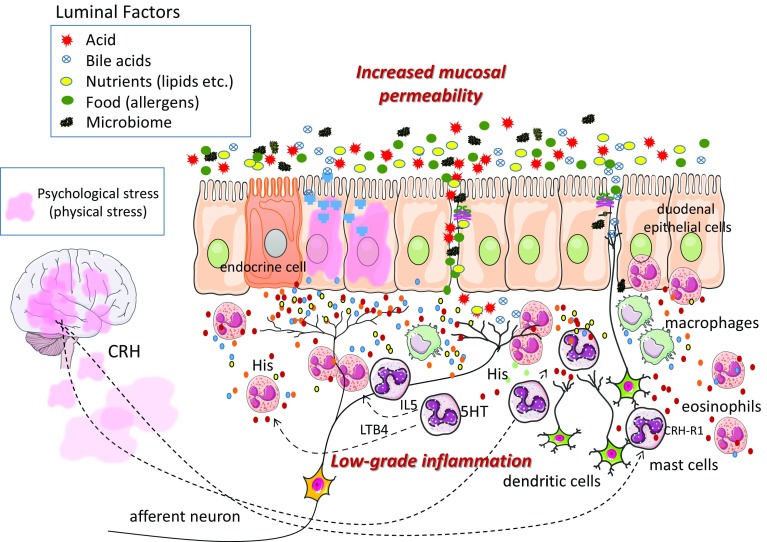Fig. 2.
Duodenal events that may be occurring in patients with FD are shown schematically. Dyspepsia is caused by gastric motility abnormalities and gastric hypersensitivity that result from transmission of noxious stimuli from the duodenum by afferent nerves. The duodenums of patients with FD are thought to be susceptible to such stimulation. Associated with that susceptibility are two key pathogenic features—increased mucosal permeability and low-grade inflammation—which really are two sides of the same coin. The duodenal lumen has a wide variety of contents including acid, bile acids, lipids, food-derived substances, and enteric bacteria. Increased mucosal permeability would allow these contents to penetrate the mucosa, where they would be recognized by immune cells and then targeted by inflammatory cells. Such contents also might be able to stimulate submucosal afferent nerves and thereby cause physiological abnormalities in the stomach that result in dyspeptic symptoms. Duodenal contents also might directly stimulate duodenal mucosal cells, which as a result would then release inflammatory mediators that excite afferent nerves. Priming of the duodenum by low-grade inflammation caused by psychological stress or remaining after severe gastrointestinal infection (salmonellosis, dysentery, etc.) may be another important factor in FD pathogenesis. Because of the inflammation, sensory nerves would be sensitized by inflammatory mediators and cytokines released by eosinophils, mast cells, macrophages, and other inflammatory and immune cells, and mucosal permeability would be increased, making the duodenum more susceptible to effects from its contents. Thus, sensitization and priming of duodenal mucosa as a result of low-grade inflammation and increased mucosal permeability may be related to chronic FD symptoms

